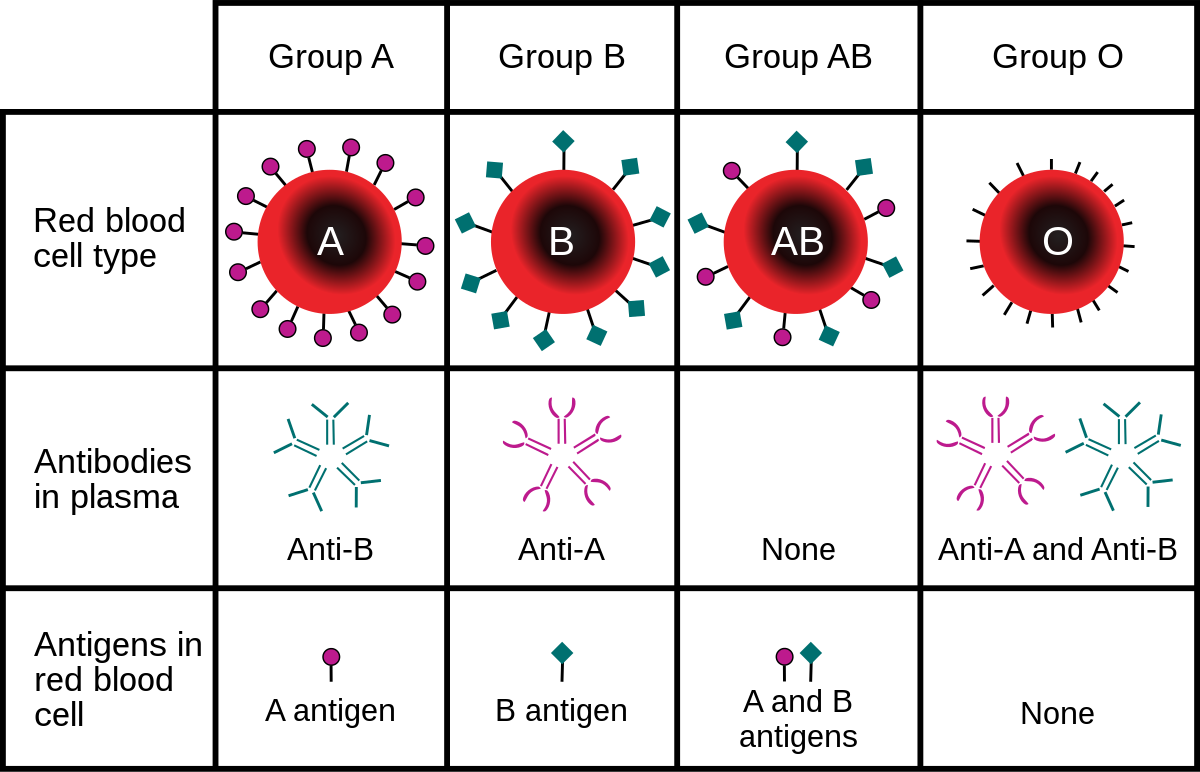

So if you were to give blood group A to a blood group B patient, their body would mount an immune response to destroy what it recognized as a foreign invader.

Patients receiving an incompatible blood type often experience a dangerous reaction their immune system would recognize the unfamiliar antigen on the blood cell surface and attack. These four groups are the most important because they indicate which blood type a patient can safely receive in a transfusion. Similarly, blood group B has only B antigens, blood group AB has both, and blood group O has neither A nor B antigens on the surface of the red blood cells. “Blood group A means you have at least one blood group A gene and as a consequence your blood expresses an enzyme that attaches a distinct sugar to the protein or lipid on the red blood cell surface,” says Silberstein. These microscopic markers, known as antigens, are commonly grouped in eight basic blood types: A, B, AB, and O, each of which can be either “positive” or “negative.” On the surface of the red blood cells, as Silberstein explained, are proteins with attached carbohydrates, essentially markers that identify the blood cells as our own. For every 600 red blood cells there are a mere 40 platelets and just one solitary white blood cell. Red cells far outnumber both the platelets, which stop bleeding by clotting blood vessel injuries, and white cells, which protect your body from pathogens and disease. In every two to three drops of blood, roughly one billion blood cells reside. Red blood cells, manufactured in the bone marrow, perform the hard work of carrying oxygen around the body. All blood contains the same basic components: red cells, white cells, platelets, and plasma, which is the liquid portion of blood holding the red and white blood cells along with the platelets in suspension. Let’s take a step back to refresh the basics. So what is expressed on the surface of the cell determines the type and which blood is compatible with which patient.” “The blood group gene encodes for a protein that gets expressed on the surface of the red cell and that is what we detect in the laboratory. Leslie Silberstein, a spokesperson for the American Society of Hematology and hematologist at Boston Children’s Hospital and Harvard Stem Cell Institute, told Medical Daily. “We inherit our blood groups on genes,” Dr. If you found out you're type AB, you're pretty unique, in fact, you have the rarest blood type of all. So why are so few people categorized as AB?
#Why is a negative blood type rare free
/what-is-blood-type-personality-5191276_final1-82cbd68788b3494cba80e01faf5248dd.png)
There is no substitute for human blood.Up to three: the number of patients that can be treated with one pint of donated blood.

About one in five people admitted to the hospital will need blood.Each year more than 4.5 million lives are saved by blood transfusions.Anyone in good health, at least 17 years old, and at least 110 pounds may donate blood every 56 days, or every two months.Patients who have AB negative blood can receive red blood cells from all negative blood types. This is the least common blood type in America because less than 1% of the population in the United States have AB negative blood. In the United States, less than four percent have this type of blood. This blood type is acknowledged to be the “universal recipient” because AB+ people can accept red blood cells from any other blood type. These are rare blood types and less than 10 percent of the population have this blood type. This blood is the second most frequently occurring blood type. O- is found in six percent of the population. O+ is the most frequently occurring blood type and is found in 37 percent of the population. Type O blood is required and must be available in inventory for newborn babies and emergency patients. Patients with any blood type can receive O negative blood.


 0 kommentar(er)
0 kommentar(er)
